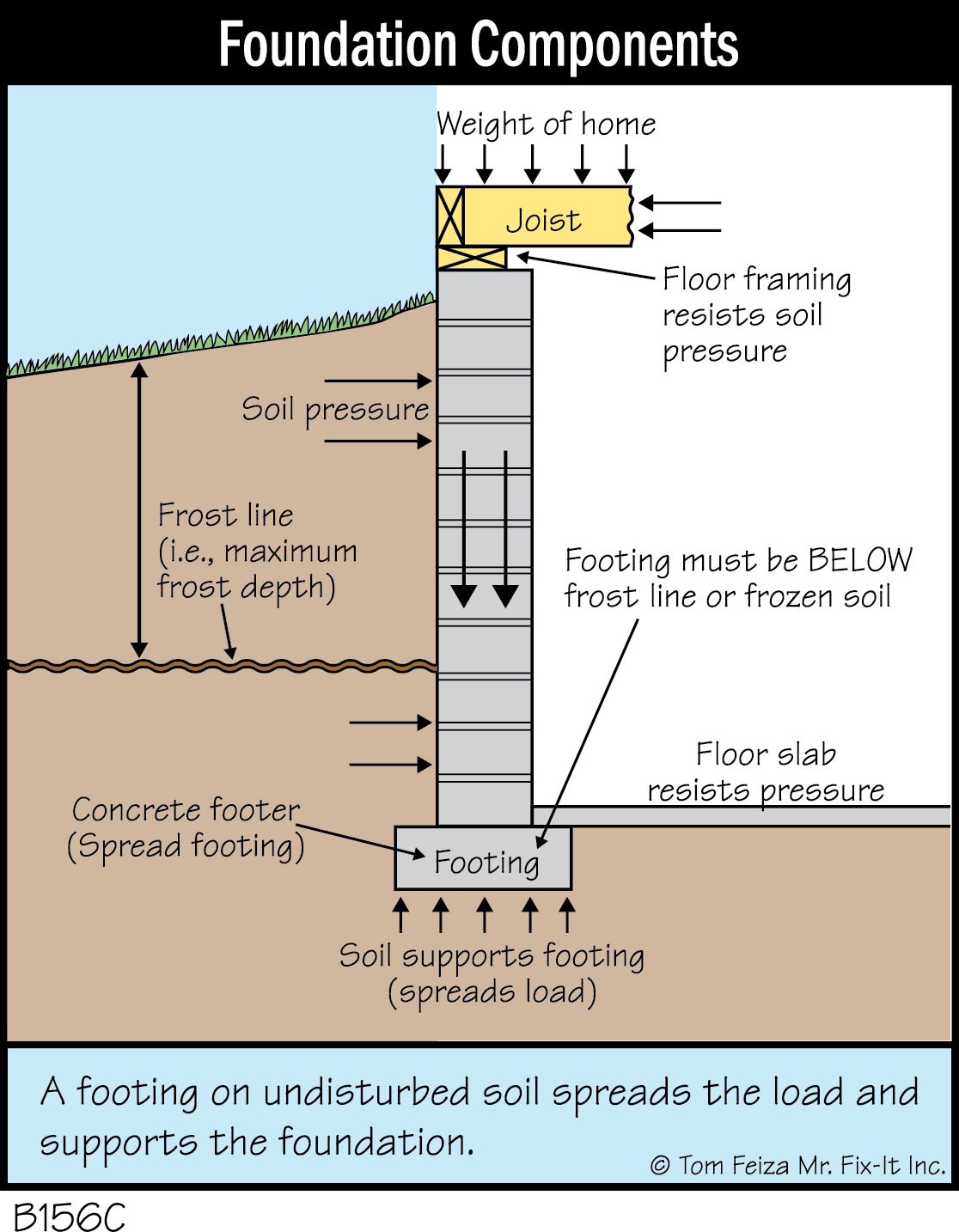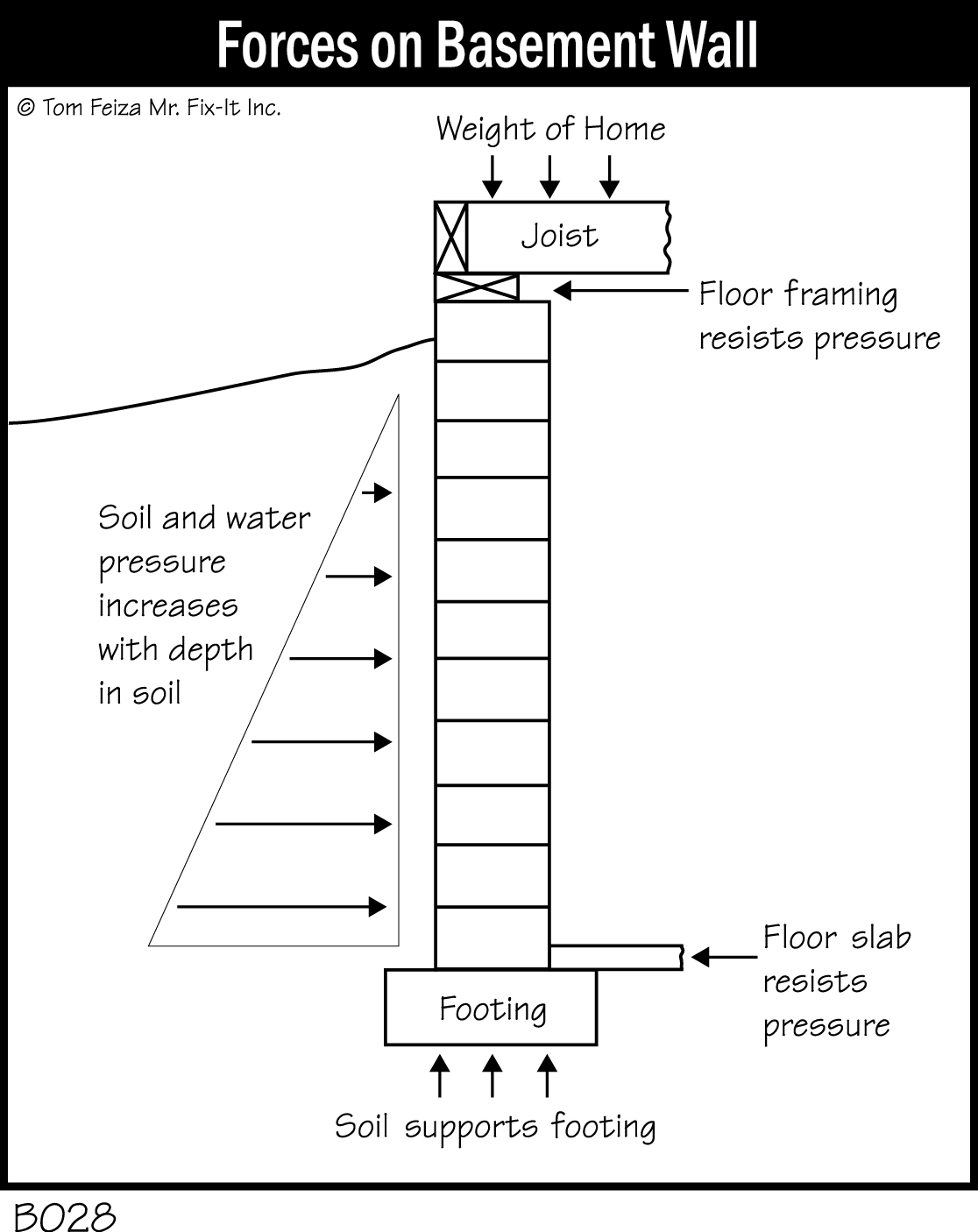All homes and other buildings must be supported by a properly designed and constructed foundation. The foundation starts with a footing, footer or spread footing. These terms all mean the same thing: a structure that spreads the weight of the home over undisturbed soil.

The footing must always be placed below the frost line. Frozen soil (or really, the water in frozen soil) expands as it freezes and exerts tremendous pressure – enough to lift a home. It lifts the structure unevenly, breaking it apart. Frozen soil can easily lift concrete poured on grade and destroy the brick or frame structure.
The depth of the necessary footing varies with climate. In the northern United States, the footing must be below the 4-foot frost depth, so most homes have full depth basements. In southern climates, footing can be just a few inches below the soil; this results in the use of crawl spaces or slab-on-grade construction. With slab-on-grade, the home rests on a continuous slab just below the soil surface.
The type of soil also has a big influence on foundation design. If there is no good undisturbed soil, gravel may be added, piles may be used, or construction may be avoided in the area. Rock, sand and heavy clay may require a special footing design.


